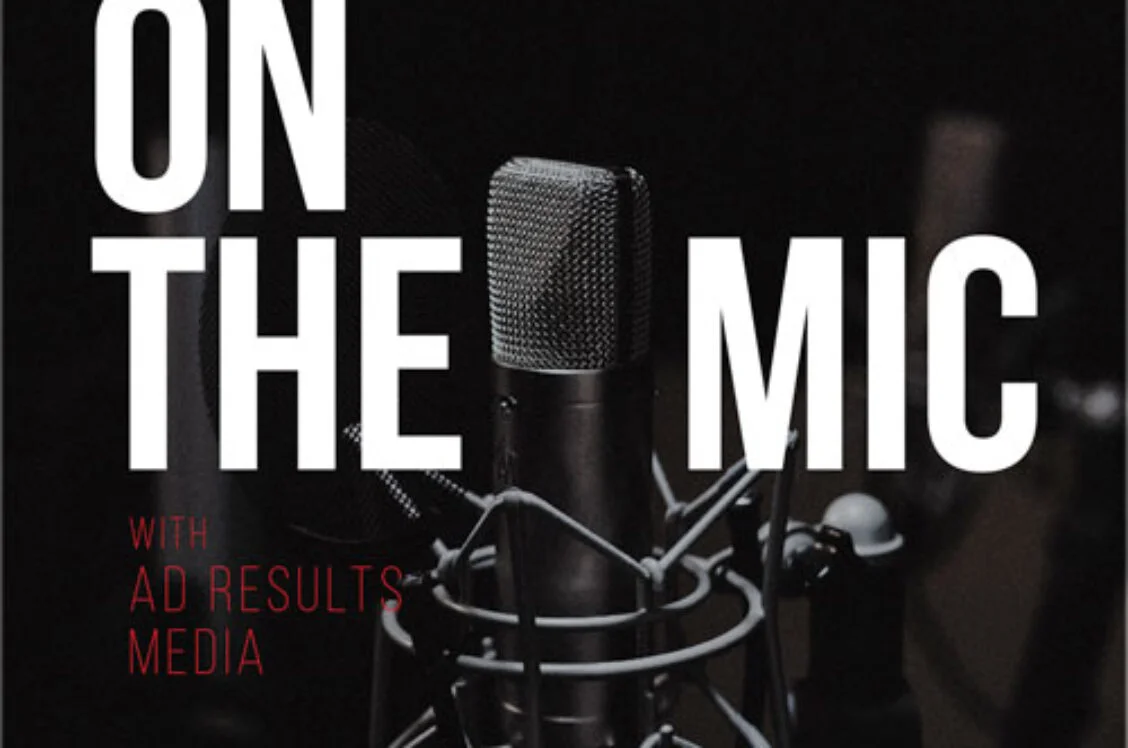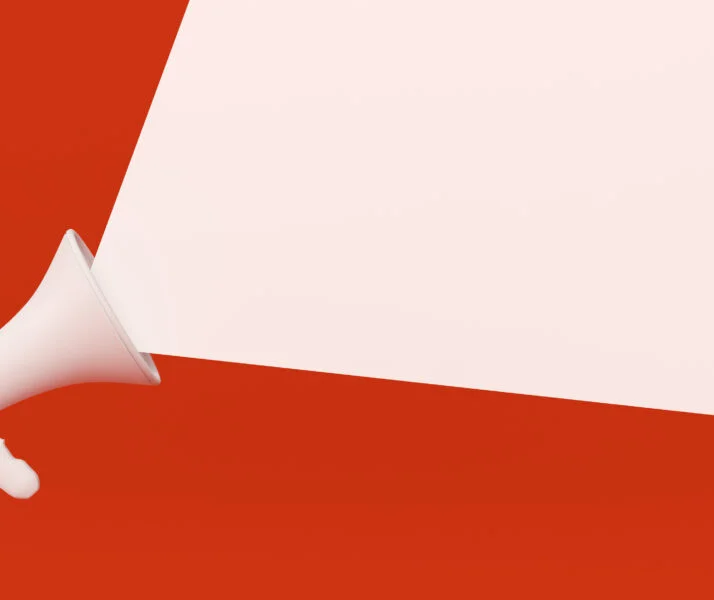
In Part 2 of our Copy Writing 101 Series, we continue our journey into copy writing and the development of audio advertising as we dive into messaging and the three dimensions of verbal communication: voice, tone, and content. Key topics for this episode include: Starting with the Why, Content: The Matter and The Raw Material, Tone: The How and The Situational Approach to Delivering a Message, Voice: The Why and The Core of Your Brand, and how this applies to audio advertising.
Podcast Transcript
(0s):
Here at Ad Results Media. We know that Brand strategy is centered on messaging and that good Advertising is rooted in a solid brand strategy in the Audio advertising space. Your word should differentiate you from the competition. People in brands communicate so much through how we present ourselves, not just in what we say. There’s always subtext underneath the explicit Message. In today’s episode, senior copywriter, Nathan spell we’ll continue guiding us through part two of our copywriting one Oh one Series, focusing on messaging, Voice Tone and Content. So let’s get started. That’s a great thing about stamps.com. They grow with you as much as I had. I couldn’t wait to get back to my sleep number bed.
(45s):
I love my third love bras. They’re hands down the most comfortable bras I’ve ever owned. I love making blue apron. I love it. It’s my me time. There is a really good book by Simon Sinek called start with why Simon Sinek. He inspired a lot of my budding leadership. Yeah. He has a lot of great books. Yeah, absolutely. Start with why was the first one I read and everyone should read it. It’s really good. Start with Why really shapes how I, and I think a lot of people have started to think about messaging. The whole point of the book really quickly is that those who lead as opposed to leaders who are just maybe in positions of leadership, the true people who are leading are effective because rather than starting with the what or the, how they start with the Why he draws this diagram in this Ted talk that the book is based on.
Foundations of Effective Messaging: Starting with ‘Why’ Over ‘What
(1m 39s):
Have you seen the Ted talk? I haven’t. It’s good. Especially if you want to like give somebody an intro into the book, that’s a really short, but basically he draws this, you know, three concentric circles. And the whole point is that if you start at the Core of the bull’s-eye of the, Why your message is more effective, I think of it as like a pyramid, right? Like the, what is like this shiny gold top of the pyramid. And if you start there, you have nothing to put it on. So you want to start with a foundation. And that’s what we really mean when we say Brand should start with defining their Voice before they focus on the content of their message. And another good reason to start with why, as opposed to what is that? What is the more superficial level of a brand and messaging? And because it’s superficial, it’s actually the easiest part of the brand for others to replicate, like who you are, is much harder to change than what you wear or how you present yourself even.
(2m 31s):
And that’s why we want to start with a really being clear on who the brand is. And also, you know, it’s a more sustainable and long-term view. It’s a long game to choose, to inspire people, rather than just talk about the features and benefits of your product, rather than just making a quick sale. Exactly short term sales happen because of lots of reasons. But people do care about like the what, and I want to really talk about why it’s not the best place to start when you’re starting with Content, your looking at what is the, the Raw Matter, the Material. It shouldn’t be the main focus like we said, but people do need it because ultimately the features are the benefits of Matter to them if your in the market for a computer, but every piece of advertising that you see just says, we have computers.
(3m 14s):
You’re like, well, great. I have no information to go on. But look at like the, I’m a Mac, I’m a PC campaign, for example, right. I definitely remember the day it highlights this thing about people that use computers. They go into camps and they say, people like us do things like this, which is an idea that says God and writes about if you guys don’t know Seth Godin, he’s great. He is a great writer, talks a lot about marketing, but the idea is that we form tribes. When we say, you know, I care about this. And so when you’re starting with who you are as a brand, you’re connecting to a certain tribe. You’re connecting to the kind of people that walk in and say, I’m a Mac. And we look like this and we do this. And this is what we care about. If all you’re doing is saying, you know, we sell computers that work well, and don’t break.
(3m 55s):
Then you’re just kind of getting this wide net, but not a very specific or loyal net of people. Another analogy I really like is Martin Luther King Jr. His famous Message, right? The what of that Message. A lot of people have this Message, this what I should say, the Content, which is that inequality and segregation in America needed to end. But what did we all remember? What did we all connect with? I have a dream. And what does the dream? It’s this really deep resonant calling back to the founding of America and what it means to be American. And when you just focus on the, what you miss out on the deep resonant, potential that, you know, every Message really, to every time you’re communicating with someone, you have an opportunity to deeply resonate with them.
(4m 41s):
And that’s really the goal. I think it should be the goal for every advertisement, whether you’re doing a, you know, a brand and campaign or a direct response campaign, as much as you can, you want to try to resonate with someone. So that’s why we don’t start with Content again, Content important, but its not the focus. One important thing about content is that it can’t contradict who you are. If you’re saying one thing, but you’re calling yourself for defining yourself as something else. And they’re completely opposed. There’s a problem in real life, we call it sarcasm or worse, right? Lying. The Voice contradicts the message. So the message is saying one thing, the voice is saying another, but a distinction there is that a contrast, a difference is really useful, really powerful.
(5m 23s):
We want to avoid the dissonance. We want to avoid contradicting, but we have to have the juxtaposition between a typical message and an atypical Voice for a typical message to suddenly be inspiring or delightful. And the lifestyle is a big deal because delightful is memorable. Delightful is I want that. So one client of ours that I really love their messaging as an example is a HIMS. HIMS is a way for those of you that don’t know hymns is a men’s wellness brand and they, you know, their products range from hair loss to ed and performance, anxiety products like very taboo subjects for men.
Case Study in Brand Voice: How HIMS Masters Tone and Authenticity
(6m 3s):
Most guys are not used to a company coming at them the way hymns does. And what does hymns do? Hymns comes at you, very straightforwardly, but tongue in cheek at the same time. So they don’t beat around the Bush, but they’re also not making you uncomfortable. And they’re finding a way to depict these things that men really would rather not think about and probably not seek healthcare for and spark like, Oh yeah, I should take care of this. And I like these people. They’re talking to me in a different way. The point I’m trying to make there is just that the contrast through with the Voice and the Message can be really Key to a successful strategy for your messaging. So that’s Content and why we don’t start with Content.
(6m 44s):
Another important aspect of your messaging is the Tone. Unlike Content, which has hyper Situational. If your talking about product a, you never want to be describing a completely different product. You know, you don’t want to describe product B when your trying to sell a product day. So that’s what I mean by, you know, the, what is very specific Tone is a little bit more flexible, but it’s also very Situational. It’s similar to how a musical instrument like an acoustic guitar, you know, most people have. Have you ever played around with the guitar? I played a little guitar. So I think of it. I got to play ukulele. It works for the ukulele.
(7m 25s):
It’s a shorter one board. I think so, but it still works because the analogy I was going to draw is you can play the open chords where you’re playing toward the lowest part of the fret board. And you get a certain sound with a C chord, but you can play that C chord, numerous places up and down the neck and you can play, you know, notes and numerous places across the neck. And they don’t necessarily have to be a different pitch to have a different tone because different areas as a guitar sound different. So all of that to say, if your writing a song or you’re making an arrangement, you think about the context of the song, what kind of emotion are we trying to convey? How should we maybe extend the court? So it’s not just a normal C chord. Maybe it’s a C major seven or maybe it’s even jazzier than that.
(8m 8s):
Maybe it’s warmer. Maybe it needs to be a little more simple. Maybe it needs to be a little a theorial and your brand’s tone is Situational in the same way to go back to him as his Voice being so great. They have a nuance and tone depending on the situation who they’re talking to when they’re talking to them and we do this as people to, we might have a certain characteristic Voice, but we change our tone. Oh absolutely. You change to match whoever it is that you’re talking to. Exactly. So that’s Tone. And it’s important to remember that Tone is driven by your customers. The people you’re trying to reach, the kind of decisions you make should really be driven by your concept of a real person.
(8m 50s):
Again, you might have this customer avatar, this persona you’ve created based on research, which we talked about in the first episode on copywriting. But you use that information, especially the qualitative information that you have things like, what do these people care about? What do they love? What do they hate? What do they do for fun? What do they believe? What makes them feel alive? And who are they trying to impress? What, what status are they at now? What goal are they trying to achieve? And if you really understand someone and you understand the context of how you’re or where you’re meeting them, you know, you’re at a much better place to choose the appropriate Tone for that situation. Going back to the guitar analogy, it’s the same way that you can choose one version of a C chord versus another, depending on the song and depending on the context within the song.
(9m 36s):
So that brings us to the best and most important part, which is the Voice. The Y is the foundation. And we start with Why, because it’s the hardest thing to change. It makes sense that you start with the hardest thing to change because if you start elsewhere and later you’re like, well, well that doesn’t fit all of these things. Yes, exactly. All of these things we were working on are problematic now because we’ve decided we want a different personality, a different voice. So it’s really, it’s really good to start with the big picture in mind. There’s this idea in music of tambour, one instrument versus another completely different sound. Even within the same like family of instruments.
(10m 16s):
So a violin versus a cello, they’re both string instruments, but they have a very different tambour. And the tambours even more distinct between a brass instrument and a triangle. You can change a lot with your instrument. If you’re a guitar player, you can discover new territory. Maybe you might hit a certain part of the guitar to get a percussive sound or a strum strong, a way to get a bell like Tone. But a guitar is a guitar. You cannot make it sound like something that it isn’t like the chances of you making it a guitar sounds like a flute without some sort of post-processing involved a very slim. You want to know like, okay, who are we as a brand? And no matter what we’re saying or how we are trying to say it, what are the things about us that don’t change?
(11m 1s):
And you have to take inventory of yourself a little bit. You have to say, what are we believe? And who are we? But most importantly, who are we For? Going back to the idea that people like us do, things like this, which of those tribes. So we try to connect with one way to do that is to look around, say, what are these other brands doing? Who are they trying to connect with? But when you’re doing that, you want to be thinking, how are we different? And you don’t want your messaging to be just copying what someone else does. You want to understand the difference? So who aren’t we as just as important. So I think that leads us into how do you develop your voice? How do you go about deciding what the big, why is what the mission is? Well, you have to look around and say what resonated so far with our customers.
(11m 43s):
Assuming you’re not a completely new brand, you have some idea or you can ask customers, why do you continue to love this brand? And if you’re a copywriter, say trying to decide how to navigate a brand’s voice. I think there’s a really helpful exercise, which is to use a contrast in a pair of adjectives that are close in, meaning almost synonyms, but the way they have this different connotation. So maybe a brand is warm, but not intense. We know people that are intensely warm. I’m sure like confident, but not pushy. There’s a difference intelligent, but not highbrow, concise, not abrupt. And one from MailChimp who has an excellent resource on voice and tone is expert, but not bossy.
(12m 28s):
So that helps you kind of set some guidelines for how you’re going to achieve the right balance with that personality, that voice behind your brand. So if your brain is concise but not abrupt, it’s do explain when used to be said, don’t beat around the Bush, but also don’t leave important details out those kinds of guidelines, whether you’re on social, whether your on your website, whether you’re advertising out of home or whether you’re doing an Audio Ad, that part of you should be consistent throughout because that’s the part that your customers fall in love with. So if you drop it, you confuse them like, wait, I thought this brand was this way, but whenever I look at their ad here, and then I look at their ad here, they seem to be completely different people. So that’s what we, we try to avoid.
Applying Voice and Tone to Audio Ads: Strategy and Hyper-Focus
(13m 8s):
We try to be consistent. And that’s why it’s important to focus on the Voice. I guess the next thing we should talk about is how to apply all that to Audio ads. The first thing I think to consider is as a brand, you’re dealing with a show or a channel or station, and they already have a brain of their own. They have an audience. And the goal is to connect with a segment within that audience. So a Copy your messaging through that channel needs to connect your message to the overall show content. And that means keeping the Copy hyper-focused on your brands. Why, and not just the what, or even the, How, if you can really develop that emotional connection first, and then back it up with the, how are the what?
(13m 50s):
And if you can give up the reins, not entirely, but you know, and Key places where you can let the hosts and the talents personalize, if you can set those boundaries, as long as it doesn’t come in conflict with who you are, fewer boundaries is obviously better, but you want to set the boundaries as little as necessary to get that balance, right? So that the show who has this Brand can kind of marry their overall Voice with yours in a way that delivers to the right people. And the last thing I would say on that is more about the content itself. The, what is really important, I think to be hyper-focused and to not try to say everything in one Ad, because that’s like trying to give your life story to a stranger in the first time you met them, you know what I mean, a lot better to give an ongoing series of conversational moments, then to try to deliver everything you do and all of the messaging in one place.
(14m 43s):
It’s one time. If you enjoyed this episode, be sure to subscribe for updates on future episodes and leave us a comment with your feedback, questions, or ideas for future segments. Be sure to join us next time for the final installment of our copywriting. One Oh one series covering editing and finishing touches. If you would like more info on Ad Results Media and what we do be sure to visit our website at Ad Results, Media dot com. This podcast was written and produced by Nathan spell and Lindsey Boyd with sound, Mic singing and editing by Freddie Trae. Ho this podcast is an Ad Results, Media production.


